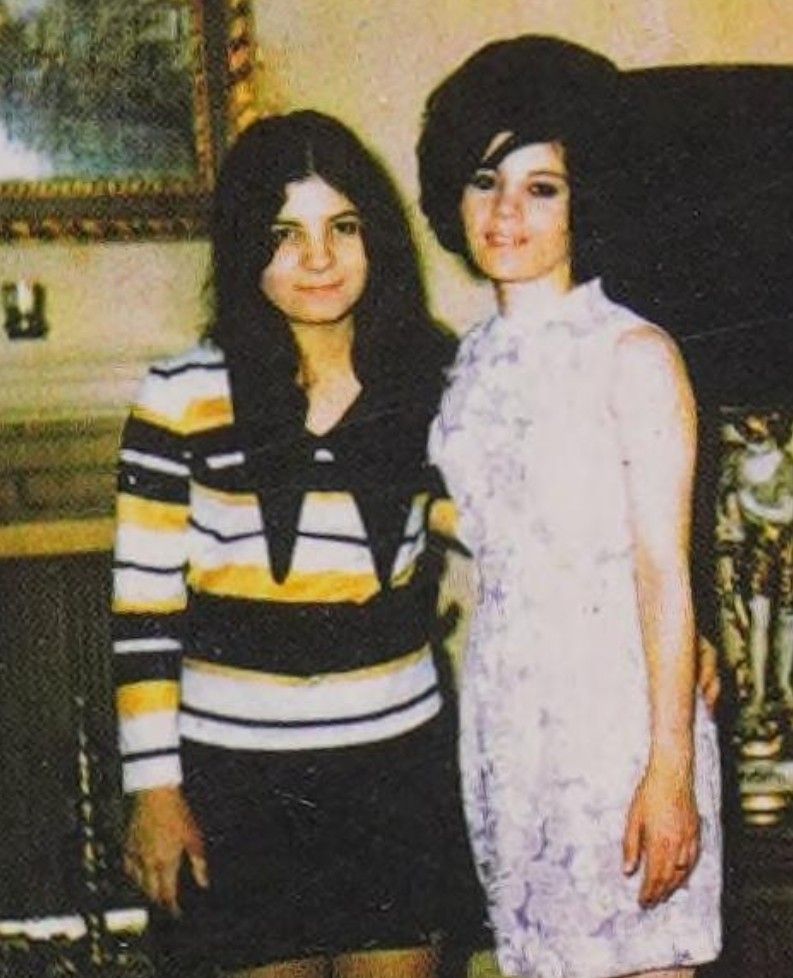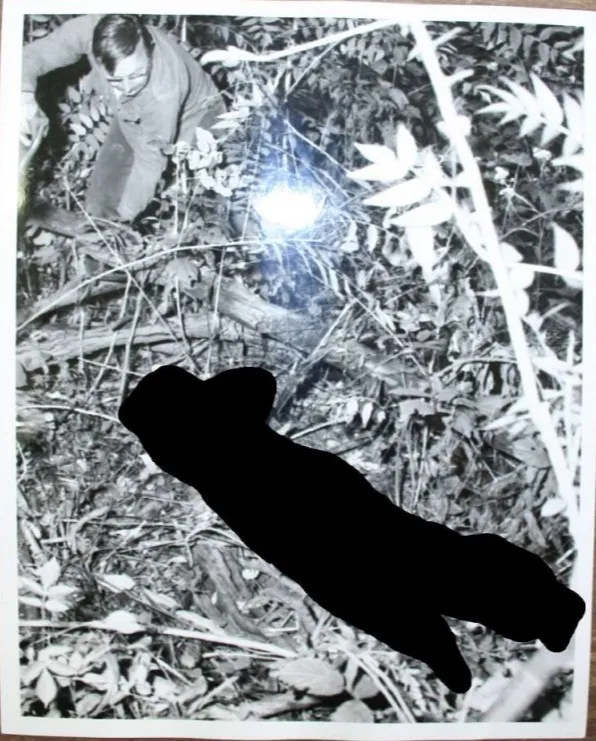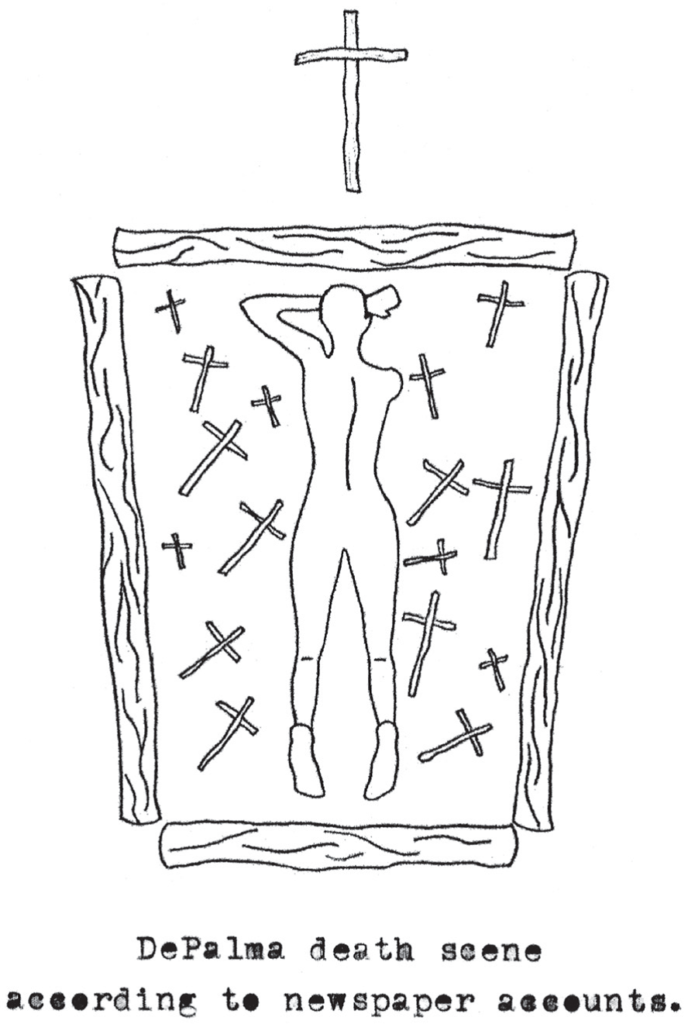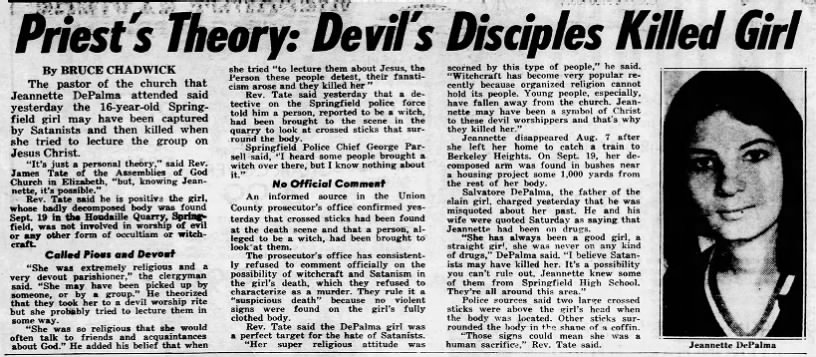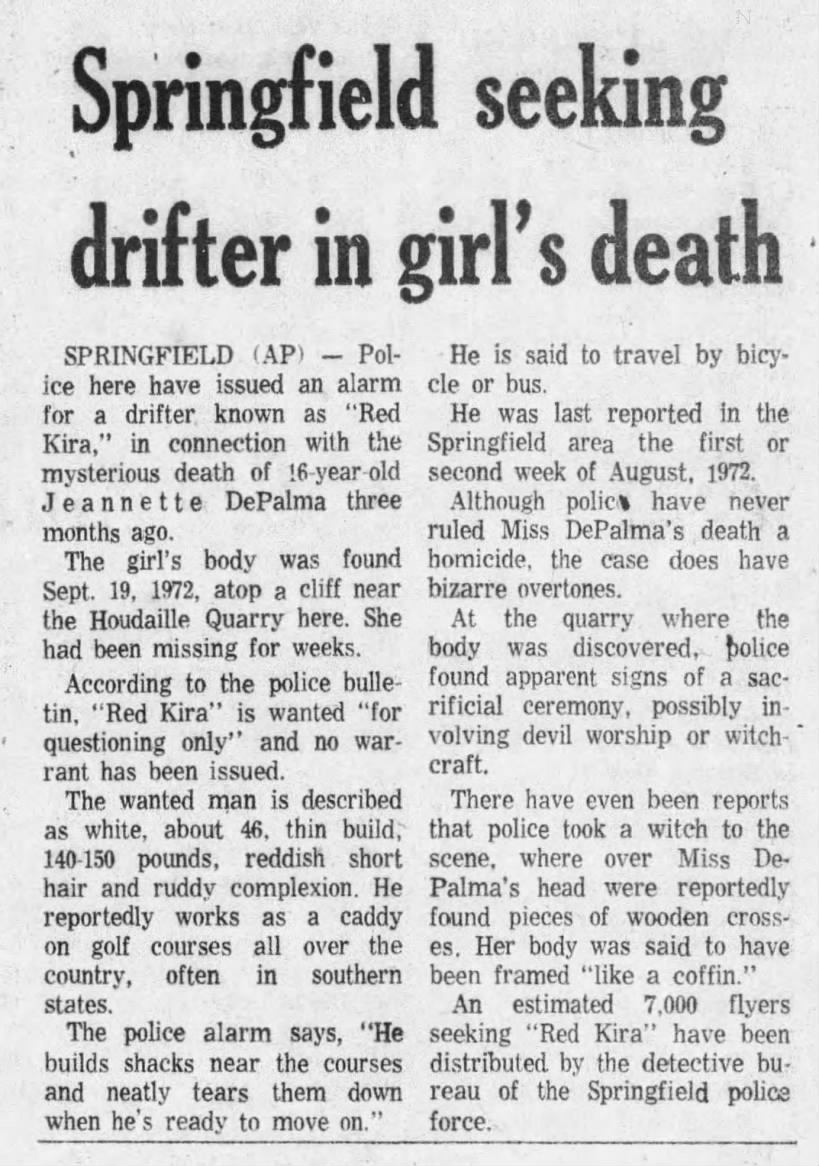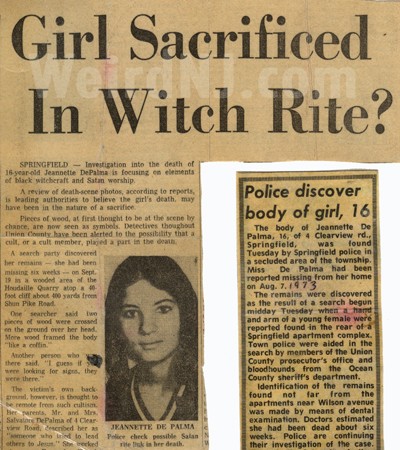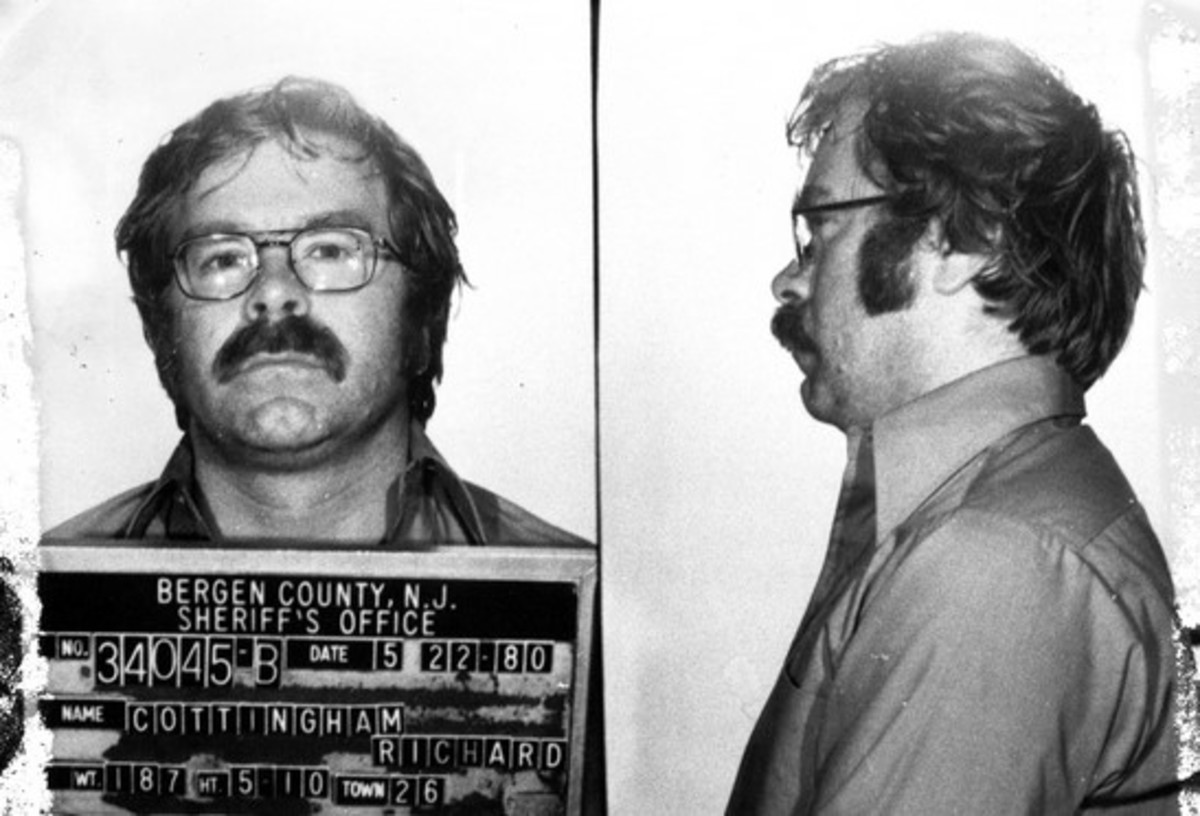The Jeannette DePalma Case: When Satanic Panic Destroyed a Murder Investigation
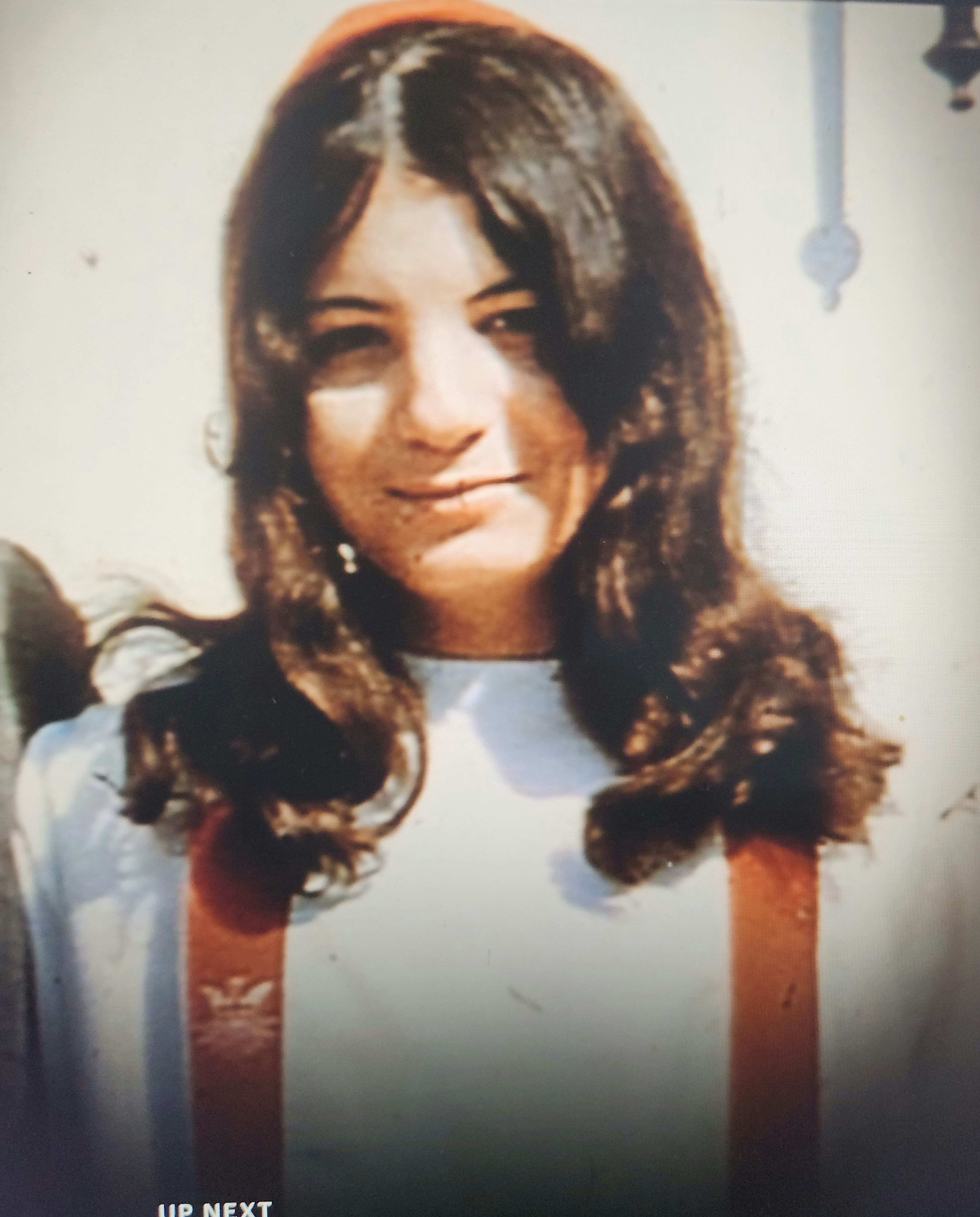
In September 1972, a dog came home carrying a human arm. What police found next launched 50 years of ghost stories, conspiracy theories, and absolutely zero answers. But in 2024, everything changed. This is the real story of what happened to Jeannette DePalma.
Llsten to this episode here.
When Fear Writes the Story: The Jeannette DePalma Case
So here's what actually went down in Springfield, New Jersey in 1972, and I promise you it's wilder than any horror movie because it's real and it involves some of the worst police work you've ever heard of.
A Normal Tuesday That Wasn't
August 7, 1972. Jeannette DePalma was 16 years old, about to turn 17 in just a few days. She told her mom she was taking the train to visit a friend. Totally normal teenage plan. She walked out the door of her family's home in Springfield, New Jersey, and that was it. Nobody saw her alive again.
Now, Jeannette was complicated in the way most teenagers are complicated. She loved rock music, went to parties, hung out with friends. But she'd also gotten really involved in this thing called the Jesus Movement, which was basically the Christian version of hippie counterculture. She'd been through some stuff with drugs and was actively counseling other kids about staying clean. She was also known for hitchhiking, which was super common back then but obviously dangerous.
Her family was traditional Italian Catholic, big family, moved to Springfield in 1966. By all accounts, she was a sweet kid. Quiet, funny, kind.
The Discovery Nobody Was Ready For
Six weeks went by. Six entire weeks. Then on September 19, 1972, a neighborhood dog comes trotting home with a severely decomposed human arm in its mouth.
Police followed the trail to this elevated cliff area in the Springfield Houdaille Quarry. The locals called it "The Devil's Teeth" because of course they did. Everything creepy gets a creepy name. And there they found Jeannette's remains.
Where Everything Went Completely Off the Rails
Here's where this case goes from tragic to absolutely infuriating. The body was badly decomposed, which already makes forensic work really difficult. But the way the scene was described? That's where things get messy.
The most reliable accounts say her remains were inside this perimeter of fallen branches and logs arranged in a coffin shape, with some small makeshift wooden crosses nearby. If that's true, it could mean someone tried to give her a crude burial. Maybe the killer felt guilty. Maybe someone stumbled on her and tried to do something respectful. We don't actually know.
But that's not the story that spread. Oh no. Within days, rumors were flying that she'd been found on a pentagram surrounded by mutilated animals. Full occult ritual scene. And even though law enforcement denied this, the story was already out there, growing legs, running through this affluent suburban community like wildfire.
The Pastor, The Press, and The Panic
Enter Pastor James Tate from the DePalma family's Assemblies of God church. This man stood up publicly and declared that "devil's disciples" killed Jeannette, possibly because she tried to preach to them. A religious authority figure saying this in 1972 suburban New Jersey? That's basically throwing gasoline on a fire.
The newspapers went absolutely feral. Headlines like "Witchcraft seen possible in teen-age girl's death" and "Was girl black magic victim?" started appearing everywhere. People started talking about a Satanic cult called "The Witches" supposedly operating in the nearby Watchung Reservation.
And here's the thing that makes me genuinely angry… . This narrative actively derailed the investigation. Resources that should have been used to track down a human predator, someone who killed a teenage girl, were instead wasted chasing rumors about devil worshippers in the woods.
The Investigation That Wasn't
The early police work on this case was a disaster. They focused hard on this guy called "Red Kira," a 46-year-old caddy who lived in a makeshift camp near where the body was found. Red had left the area sometime in August, which looked suspicious. They issued a bulletin in January 1973 asking to question him. They found him, interviewed him, and the Union County Prosecutor's Office cleared him completely.
Meanwhile, Jeannette's parents were giving investigators what former officers described as "short and vague answers." There was talk around the station that the family wanted to "keep this quiet." Whether that was shame about her hitchhiking, mistrust of police, or just wanting privacy during an unimaginable time, it created friction and slowed everything down.
The Autopsy That Raised More Questions
Medical Examiner Dr. Bernard Ehrenberg had a tough job because of how decomposed the remains were. The official cause of death? Unknown. He couldn't rule out strangulation and said it was a possibility. There were no bullet wounds, no stab wounds, no broken bones. No evidence of drugs or overdose either, which shut down theories that friends had hidden her body after an accidental death.
The lack of external trauma points toward strangulation, which is exactly the kind of method serial killers prefer because it doesn't leave much evidence. But here's something weird: they found a high amount of lead in her remains. Nobody could explain it then, and nobody can explain it now. It's just this bizarre forensic detail hanging out there with no context.
Files, Flooding, and Failures
Fast forward to the late 1990s. Weird NJ magazine starts investigating this case and discovers that the original Springfield police files are missing. Gone. The Springfield PD claimed they were destroyed by flooding from Hurricane Floyd in 1999. The Union County Prosecutor's Office, though, confirmed they had copies.
So was this a cover-up? Probably not. More likely it was catastrophically bad record keeping and government incompetence. But here's what really seals the failure: a retired officer revealed in a documentary that Jeannette's purse, a crucial piece of evidence that could have contained notes, personal effects, or trace evidence, was never officially entered into evidence. They just didn't follow basic procedure on one of the most important items in the case.
The Moment Everything Changed
September 2024. After decades of work, Weird NJ finally obtained and reviewed the original crime scene photographs from the Union County Prosecutor's Office. The photos that police claimed were missing.
Their conclusion was definitive: there was zero occult activity involved in her death. None. No stick crosses in the photos. No stone circles. No animal remains. Nothing.
Fifty years. Fifty years of a narrative built on absolute fiction. The urban legend literally took over the investigation and probably let the murderer get away with it.
Enter the Torso Killer
With all the occult nonsense finally debunked, investigators can focus on what this case actually is: a likely serial killer victim.
Richard Cottingham, known as the Torso Killer, is one of New Jersey's most notorious serial killers. He was actively killing in New Jersey and New York in 1972, the exact time Jeannette disappeared. His method? Strangulation. In court, he confessed to killing five women in Nassau County, New York between 1968 and 1973. Two of those victims, Mary Beth Heinz and Laverne Moye, were strangled and dumped in 1972, the same year as Jeannette.
The Letter That Changes Everything
Spring 2021. Richard Cottingham, sitting in prison, reaches out to journalist Jesse P. Pollack, who wrote the book about Jeannette's case. And Cottingham says something crucial: he alludes to abducting Jeannette while she was hitchhiking.
This detail matters so much because Jeannette's hitchhiking habit wasn't front-page news. The public narrative was consumed by fake Satanic cult stories. The fact that Cottingham knew this specific, personal detail about how she traveled adds serious weight to his claim. If he's telling the truth, it confirms Jeannette was a random victim of opportunity, not someone targeted for a ritual.
Pollack forwarded all of this to the Union County Prosecutor's Office in 2021. As of late 2022, no official updates have been released about whether they're pursuing this lead.
What We're Left With
Jeannette DePalma's murder represents everything that can go wrong when fear and sensationalism replace actual investigative work. For five decades, this case was defined by stories that turned out to be completely false. A teenage girl who was likely killed by a serial predator became the center of a moral panic that helped her killer escape justice.
The 2024 confirmation that there was no occult staging at the scene is the most important development in this case's history. It's not a story about Satanic cults. It's a story about a young woman who was probably murdered by Richard Cottingham or someone like him, and then failed by nearly every system that was supposed to help her.
Justice for Jeannette depends on them finally doing what should have been done in 1972: treating this like what it is. A murder. Not a legend. Not a ghost story. A crime committed by a human being who should be held accountable.
Jeannette DePalma deserves better than to be remembered as the center of a moral panic. She deserves to be remembered as herself: a 16-year-old girl who loved rock music, who was trying to help her friends, who walked out her door one August morning and never came home. And she deserves real answers.


